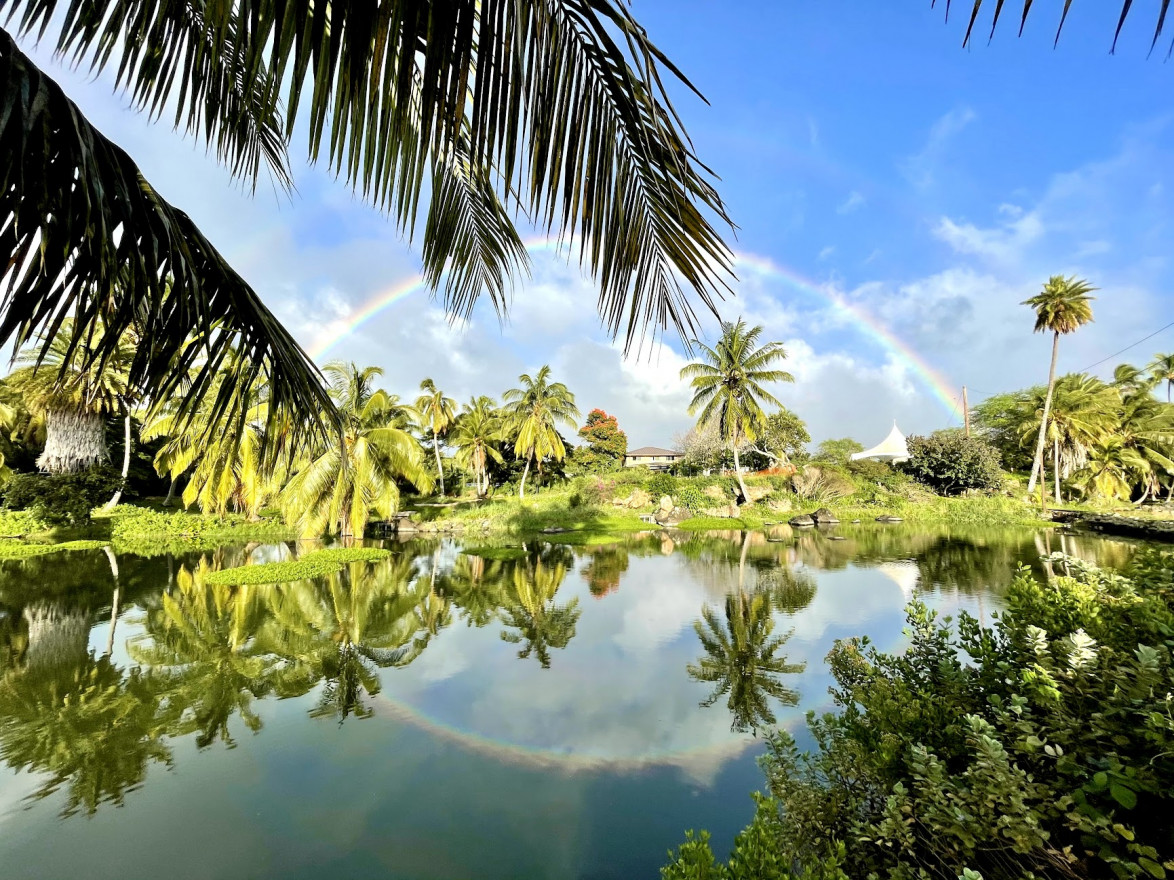
(Photo by Terrius Harris)

(Photo by Terrius Harris)
For many organizations, COVID-19 meant doors closed. At Loko Ea, a sacred, Native Hawaiian fishpond on the northwest side of Oahu that is used for aquaculture and traditional practices, the pandemic opened an opportunity for community members to advance their efforts to reclaim the ancient Hawaiian land, culture, and traditions of sustainable aquaculture production while benefiting from it.
“Loko i`a,” or fishponds, have nourished Hawaiians and sustained cultural practices since ancient times. Some 488 fishponds once dotted the Hawaiian Islands. While few fishponds remain operational, renovating ponds and maintaining them includes reuniting Native Hawaiians with one of their most honored traditional practices.
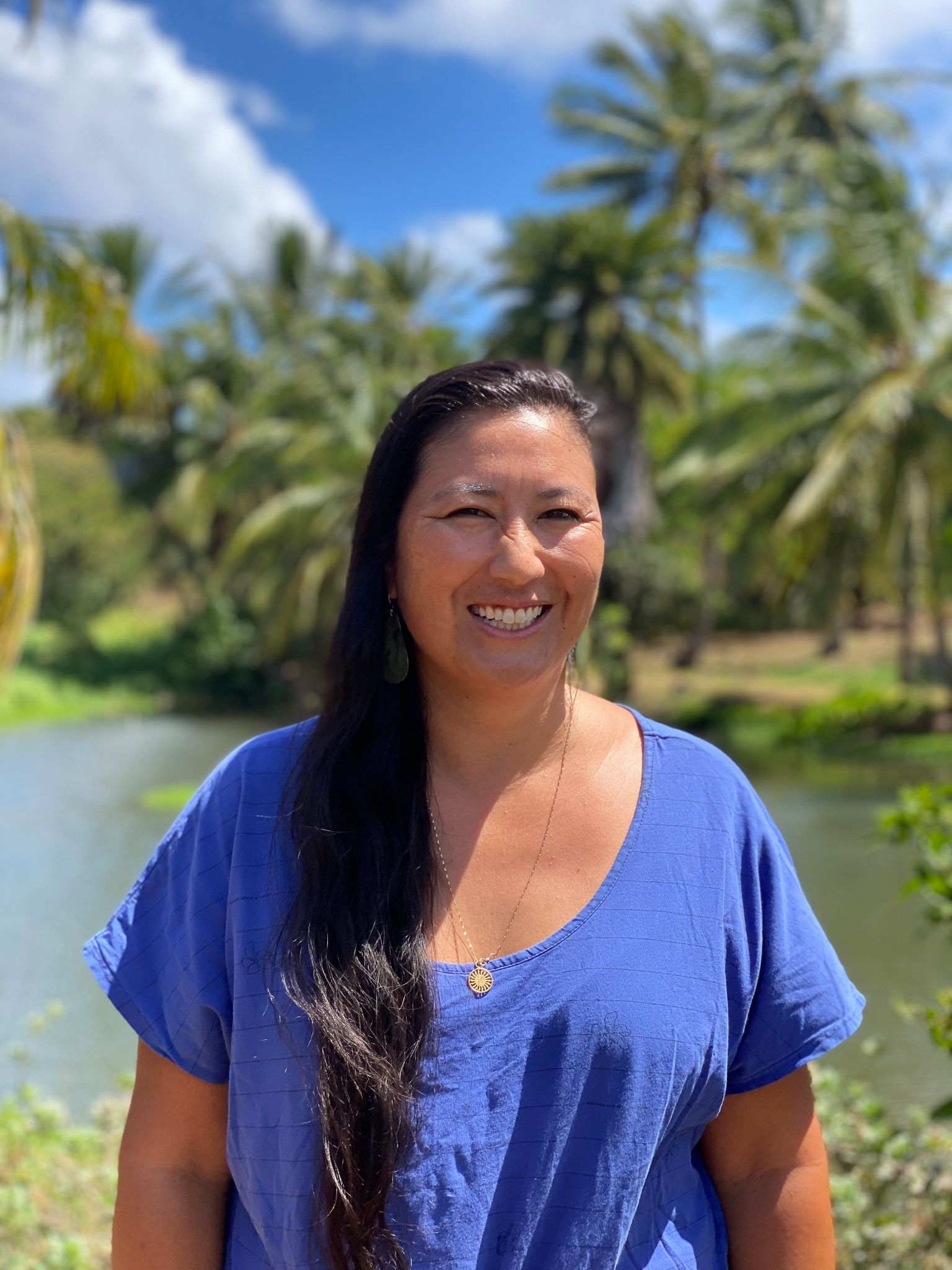
Restoring Loko Ea began over a decade ago. In 2008, volunteers started an informal community workday program. A year later, Kamehameha Schools suggested the volunteers create a non-profit that would have “kuleana,” or responsibility, for the restoration. James Estores and Venson Lee founded the Mālama Loko Ea Foundation, a non-profit that has since expanded its activities beyond physical work; it now educates the community, fosters a return of traditional Native Hawaiian practices, and raises fish and food for the community.
When the pandemic hit the organization did not spend their time idly; instead, they sought new ways to reunite and support the community. They applied for a CARES Act support grant, which allowed them to do outreach by bringing people in and to provide nutrients and food resources to the community in the form of hot and ready plates distributed at the North Shore Food Bank. Continuing within CDC guidelines, the Mālama Loko Ea Foundation held a food drive where they provided about 400 plates a day to their community, with the help of a few community members, which was significantly economically impacted by COVID-19.
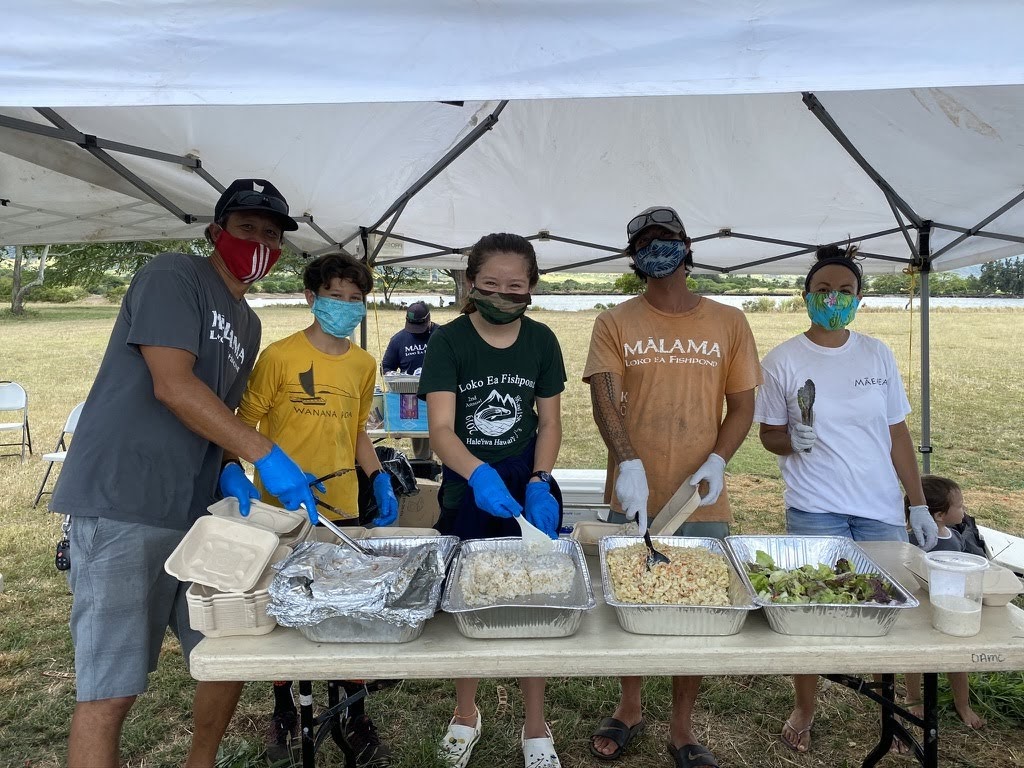
“The food drive had been happening for years through a partnership with the North Shore Food Bank, but we were able to increase it through the help of the grant. The entire situation was a pretty amazing sight. Also, sad because we’re providing food for the community but hard to see the demand was so high and it kept growing and growing every month,” Sayo Costantino, Loko Ea’s Operations and Education Program Director, said.
This food drive not only allowed them to provide for their community but also create a stronger sense of the community. With recent loosening restrictions, they are slowly able to host groups again, as more people came by to “talk story,” ask when they can volunteer, and talk about the food they ate during the food drive.
While the community has always been central to the work of the Mālama Loko Ea Foundation, it began in an effort to restore the land from its overgrown and unmaintained state.
“(Loko Ea) wasn’t helped and invasive grasses were covering over and the community was not allowed in,” Costantino said. “The community felt that as a big sore and wanted access and wanted to do restoration here.”
In seeking to return to traditional Native Hawaiian practices, and ultimately raise fish and food for the community, education comes first. “The education is important right now because people don’t know these fishponds can be an actual food source and we want to get that there and be that example for this community,” Costantino said. “We may not be able to produce for everyone in Hawaii, but we can produce what we are able.”
Loko Ea is doing this by facilitating a fish parting system in which they take what the fishpond naturally gives, instead of pushing the system to a potential breaking point. “Profit is not the goal; it’s for our community,” Costantino said. The pond produces between 300-500 pounds of fish per acre per year, which provides for the community and alleviates the need for other sources of food. This is not simply the work of the staff, but also the community who assists in this yearly production.
Using education as the most immediate tool in this restorative process, Loko Ea offers a variety of educational programs for all ages. Beginning at their roots, community workdays are open to all age groups. The work is based on the needs of the pond.
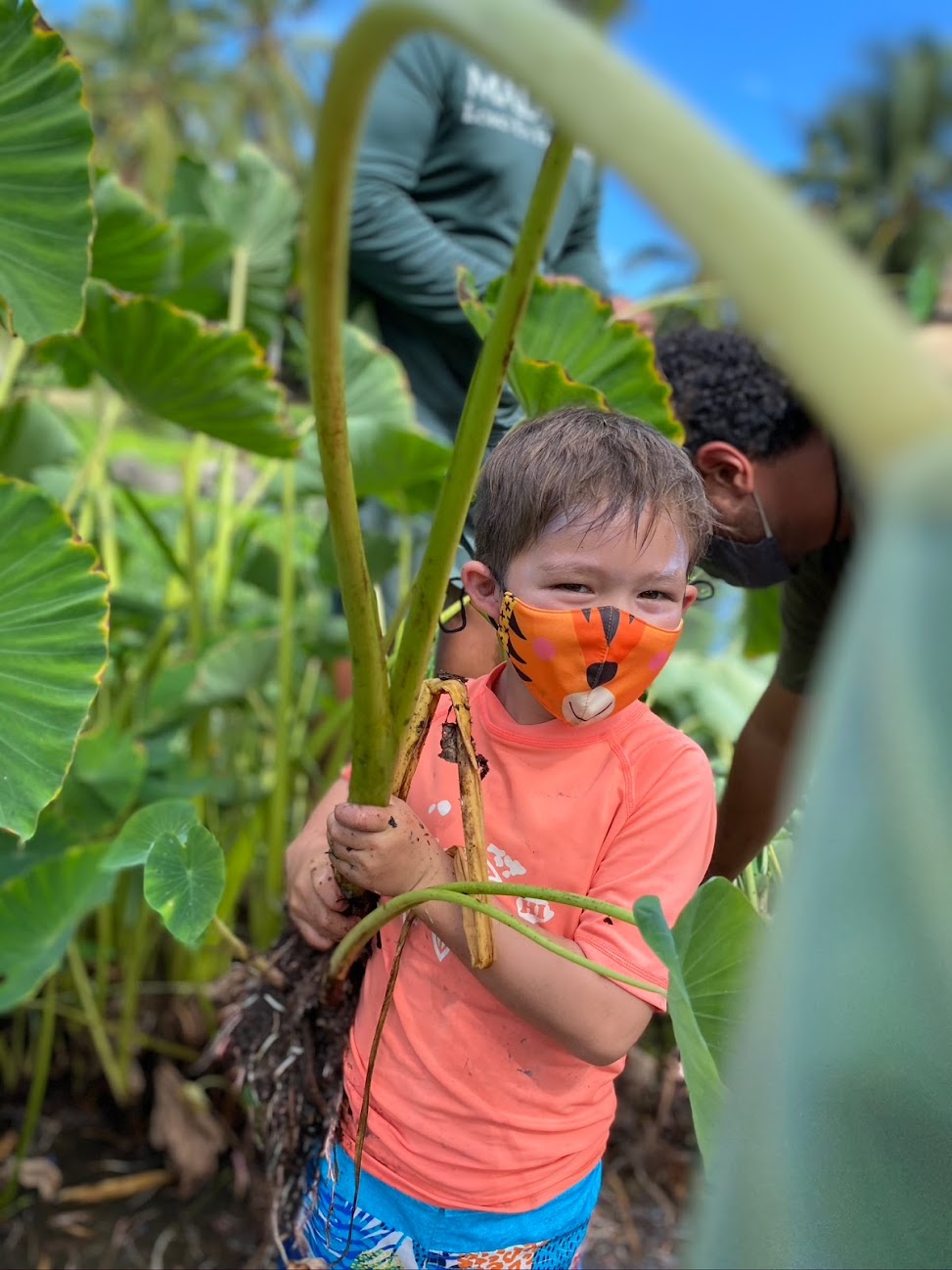
“Usually what we like to do with volunteers is, if it’s a community workday, we will start with an introduction with the history of the pond so that whoever is here will have an opportunity to learn about the place they will steward at and get a perspective that is suited to better understand the impact the work will have not just for the place but also the surrounding area,” Makua Perry, Loko Ea’s Malama ‘Āina Outreach Coordinator and Technician, said.
After this, volunteers move into “malama ʻāina,” or work, which sometimes includes water activities such as pulling weeds. They also might remove invasive species, repair rock walls, plant native plants on the property, or even clear the land to plant in the future. Some volunteers simply help prepare for an event by transporting things around the pond or helping with administrative tasks. “No day in Loko Ea is the same, and it really depends on what she needs from you when you come,” Costantino said.
Workdays are not the only opportunities that Loko Ea provides for the community. For those who are able to commit more time they also offer a variety of leadership, mentorship, and internship programs. These are opportunities to not only learn but act––not only for the land but also to ensure the survival and cultural continuation of their people.
After proudly helping their community in the midst of the pandemic and forging new connections, Loko Ea plans to maintain this momentum moving forward through the power of “mo’olelo.”
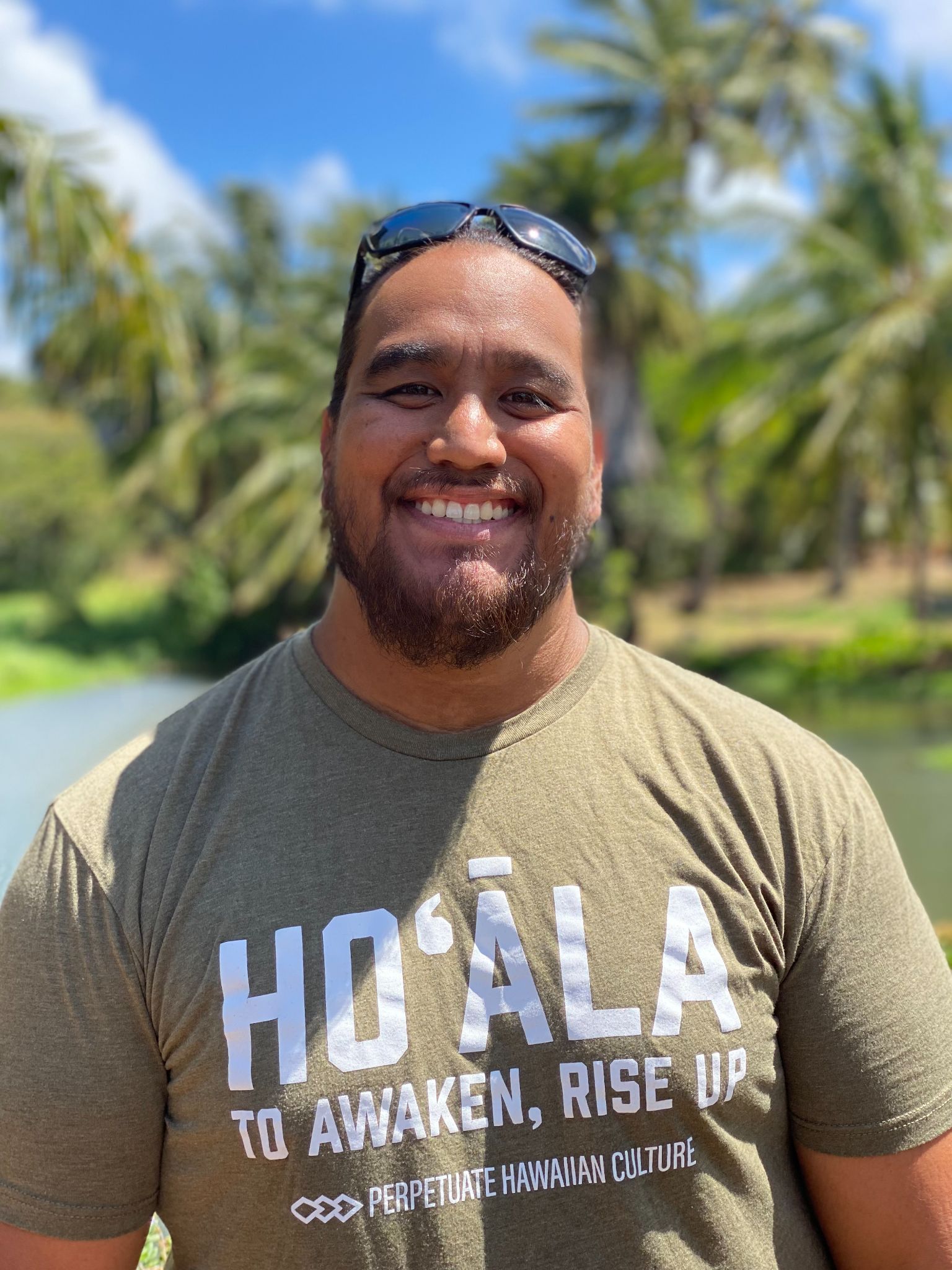
“When it comes to history and tradition, genealogical connections to place, and people, Mo’olelo plays a huge part in all of those things,” Perry said. “At Loko Ea, there is a framework that has been created by a generation of storytellers within our culture that helps us understand what we do or don’t see with our eyes because it’s not there. It’s those types of stories that are traveled through our ancestors that kinda create and maintain the cultural integrity of space and the people.”
He continued, “Look at the genealogical chant of the Kumulipo, written for a chief who was born and recited this 2000 long long history that extends from Po which is darkness and created all of these living beings. Life starts in the ocean within our genealogical chant. Through this chant, we see the story that is told through the creation of the world, and creation of Hawaii and man to walk on this earth.”
Embedded in this chant are lessons, behavior management, etiquette, and so many layers, hidden layers where they can unravel some things through mo’olelo. Makua said, “Land is everything that flows through it and everything that grows through it. That’s why it is important to teach protocol, sacredness to land, and culturally significant places like this; there is cultural and spiritual sacredness and it is something that needs to be nurtured. Use it for the benefit of all things involved, and learn how to feed your people for generations and generations.”
Witnessing the sheer passion of the staff and the community members, I am certain that in due time this is exactly what they will do. The Mālama Loko Ea Foundation is not just an organization, but it is becoming a home and beacon of light for many community members on the North Shore of Hawaii where Native Hawaiian traditions and practices are being returned to the “ʻāina.” They are reclaiming agriculture and aquaculture work in Hawaii and showing the community why these fields are important so that hopefully the next generation will also give back to the land. Just as she did for me, when you visit, Loko Ea will tell you what she needs.
For more information on how you can get involved with the Mālama Loko Ea Foundation, please check out their website here: https://www.lokoea.org/. Also, if you’re interested in learning more about the history of Loko Ea and the surrounding area of Haleʻiwa, please see Diane Naomi Canon’s story.
—
About this series: The Planet Forward-FAO Summer Storytelling Fellows work was sponsored by the North America office of the Food and Agriculture Organization of the United Nations (FAO), and the Fellows were mentored by Lisa Palmer, GW’s National Geographic Professor of Science Communication and author of “Hot, Hungry Planet.”